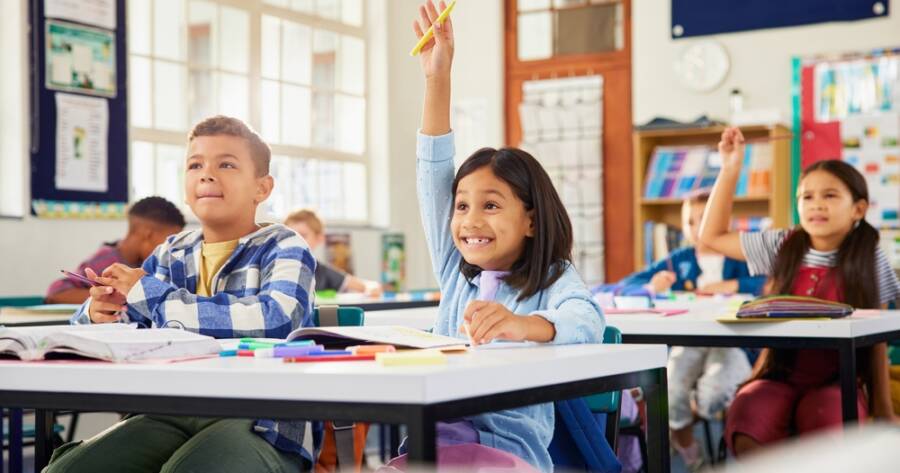Gamification is revolutionizing education by integrating game-like elements into classroom learning to enhance motivation, participation, and focus. By incorporating points, badges, and leaderboards, teachers are turning traditional lessons into exciting, goal-driven experiences that inspire students to stay engaged. This approach not only makes learning fun but also encourages collaboration, healthy competition, and a sense of achievement, helping students develop persistence, problem-solving skills, and a deeper connection to the learning process.
How to Use Gamification to Enhance Classroom Learning
Gamification is reshaping the classroom by turning everyday lessons into engaging, interactive experiences. By incorporating elements such as points, badges, challenges, and leaderboards, educators can inspire healthy competition and create a sense of accomplishment among students. These tools transform routine assignments into exciting opportunities to earn rewards and advance through “levels” of achievement, encouraging consistent participation and a more enthusiastic attitude toward learning.
The real strength of gamification lies in its ability to connect emotionally with students. When learners can see their progress in real time, it fosters motivation and confidence. Instead of viewing lessons as tasks, students begin to see them as challenges to conquer. This playful approach not only makes lessons more enjoyable but also reinforces long-term retention and deepens engagement across subjects.
The Benefits of Gamification in Education
When thoughtfully implemented, gamification enhances both motivation and comprehension in the classroom. It encourages students to take an active role in their education by making the process more interactive and rewarding. Progress tracking, immediate feedback, and achievable goals transform learning into a stimulating experience that fuels curiosity and perseverance. As students see their efforts translate into tangible rewards, they are more inclined to stay engaged and challenge themselves further.
Beyond motivation, gamified environments promote collaboration and communication. Team-based challenges teach students the value of cooperation and collective success, while friendly competition strengthens focus and discipline. This approach nurtures problem-solving, creativity, and resilience—skills essential for both academic and personal growth. Ultimately, gamification helps create classrooms where learning feels less like an obligation and more like an inspiring journey.
How to Implement Gamification in the Classroom
Introducing gamification begins with identifying clear learning objectives and desired outcomes. Educators should consider which classroom behaviors—like participation, collaboration, or comprehension—they want to reinforce. From there, game mechanics such as point systems, badges, levels, and storytelling elements can be applied to align with those goals. For example, using avatars or story-driven missions can immerse students in lessons while making progress more tangible.
Teachers can also experiment with gamification platforms such as Classcraft, Kahoot!, or Duolingo for Schools. These tools make it easy to integrate leaderboards, quizzes, and achievement badges into everyday lessons. Starting with small activities allows educators to refine their approach based on student feedback. Over time, a structured gamified system can transform classroom dynamics, making participation, mastery, and teamwork both fun and meaningful.
Types of Gamification Elements
Gamification comprises various elements that can be applied in classrooms, such as action, social, mastery, achievement, immersion, and creativity. For instance, action categories might involve dynamic activities such as scavenger hunts, while social elements encourage cooperative and competitive interactions among students. By integrating these different game aspects, educators can address diverse learner profiles and enhance the overall educational experience.
Challenges and Considerations
Despite the numerous benefits, educators must navigate potential challenges to ensure the effective use of gamification in the classroom. The balance between competition and collaboration is crucial for creating a fair and engaging environment without overemphasizing rewards or neglecting learning objectives. Accessibility and time management are also important considerations, requiring educators to adapt resources and strategies to fit diverse student needs and minimize frustration.
Available Tools and Platforms
Several platforms offer resources for educators to integrate gamification into classrooms. Tools like Kahoot!, Quizizz, and Google Classroom with gamified add-ons, cater to various age groups by transforming learning activities into fun and rewarding experiences. Moreover, comprehensive courses such as the University of San Diego‘s Gamification in Education guide educators on using gamified systems effectively, from designing systems to incorporating game elements into curricula.
Why You Should Learn More About Gamification Today
The adoption of gamification in education is on the rise, significantly transforming how students engage with learning material. By implementing well-planned gamification strategies, educators can create more exciting and interactive classrooms that motivate students to participate in their learning journeys.
As gamification continues to evolve, it remains a promising approach to enhance educational outcomes and support cognitive development. Exploring the potential of gamification in classrooms can lead to innovative practices that benefit both educators and students alike, making learning a more inclusive and impactful experience.
